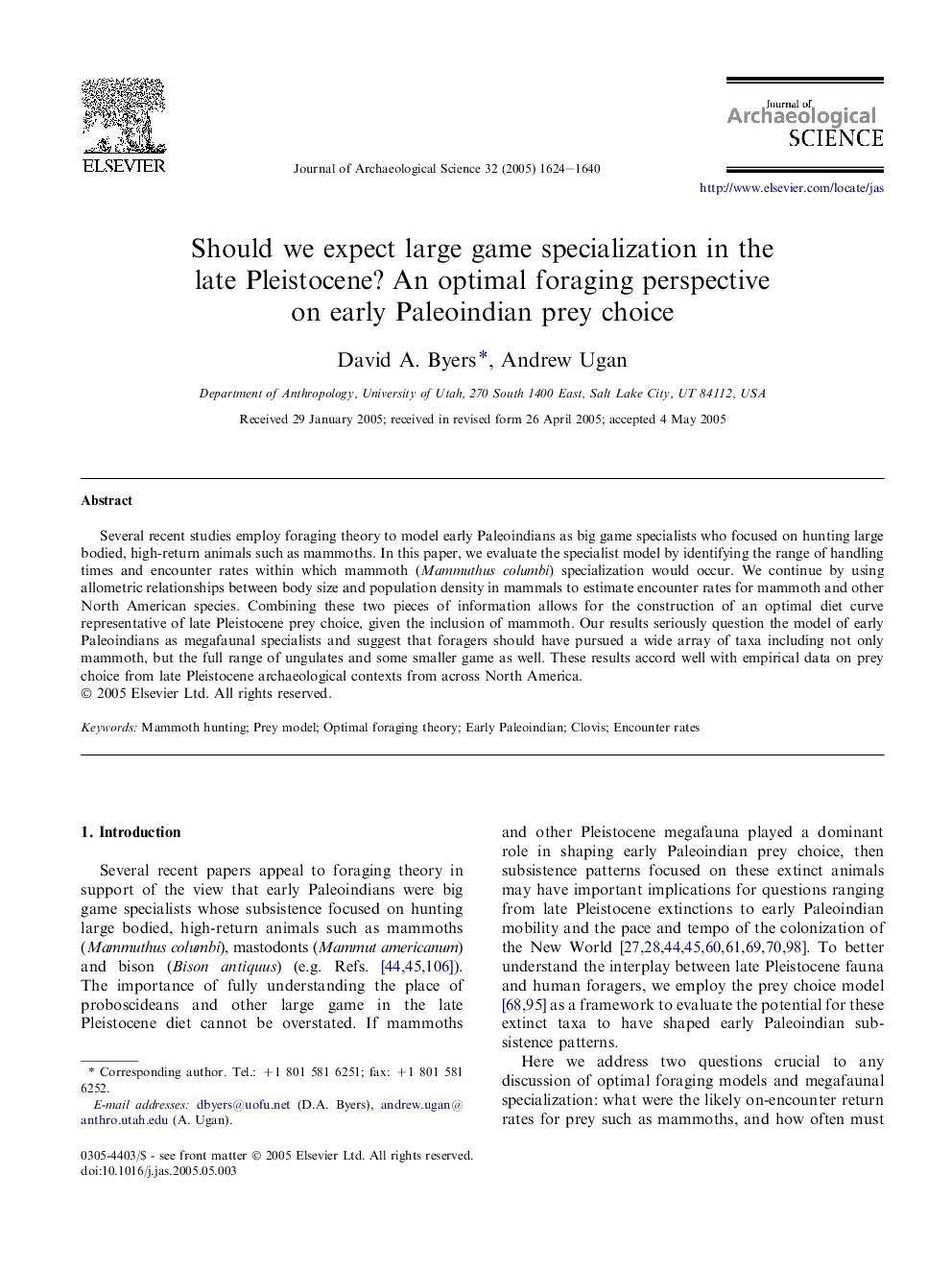| کد مقاله | کد نشریه | سال انتشار | مقاله انگلیسی | نسخه تمام متن |
|---|---|---|---|---|
| 10499369 | 943949 | 2005 | 17 صفحه PDF | دانلود رایگان |
عنوان انگلیسی مقاله ISI
Should we expect large game specialization in the late Pleistocene? An optimal foraging perspective on early Paleoindian prey choice
دانلود مقاله + سفارش ترجمه
دانلود مقاله ISI انگلیسی
رایگان برای ایرانیان
موضوعات مرتبط
مهندسی و علوم پایه
مهندسی مواد
دانش مواد (عمومی)
پیش نمایش صفحه اول مقاله

چکیده انگلیسی
Several recent studies employ foraging theory to model early Paleoindians as big game specialists who focused on hunting large bodied, high-return animals such as mammoths. In this paper, we evaluate the specialist model by identifying the range of handling times and encounter rates within which mammoth (Mammuthus columbi) specialization would occur. We continue by using allometric relationships between body size and population density in mammals to estimate encounter rates for mammoth and other North American species. Combining these two pieces of information allows for the construction of an optimal diet curve representative of late Pleistocene prey choice, given the inclusion of mammoth. Our results seriously question the model of early Paleoindians as megafaunal specialists and suggest that foragers should have pursued a wide array of taxa including not only mammoth, but the full range of ungulates and some smaller game as well. These results accord well with empirical data on prey choice from late Pleistocene archaeological contexts from across North America.
ناشر
Database: Elsevier - ScienceDirect (ساینس دایرکت)
Journal: Journal of Archaeological Science - Volume 32, Issue 11, November 2005, Pages 1624-1640
Journal: Journal of Archaeological Science - Volume 32, Issue 11, November 2005, Pages 1624-1640
نویسندگان
David A. Byers, Andrew Ugan,